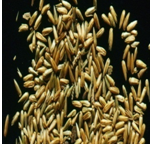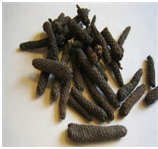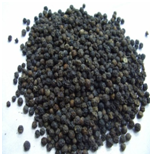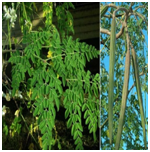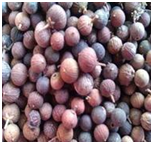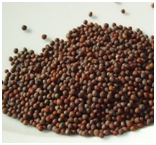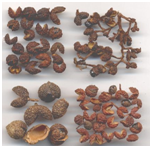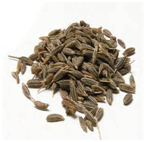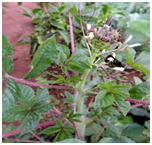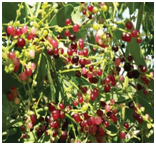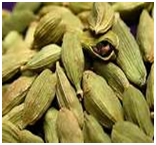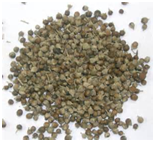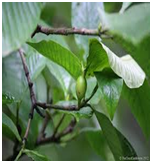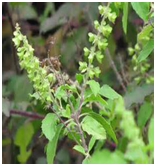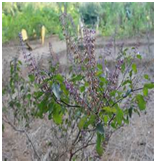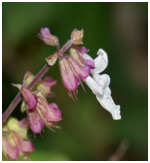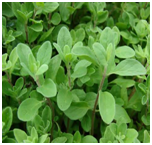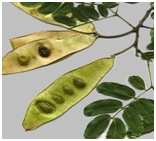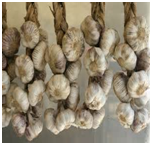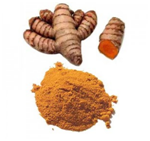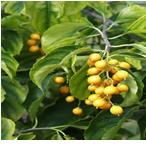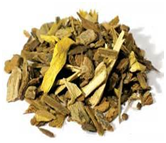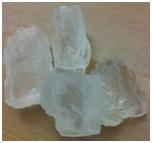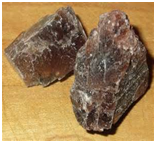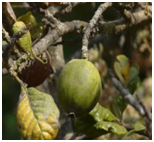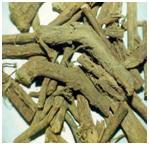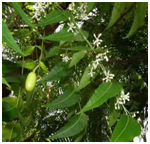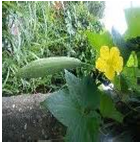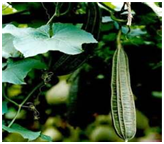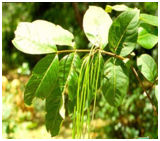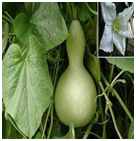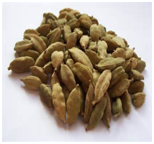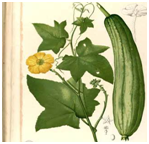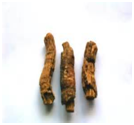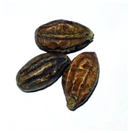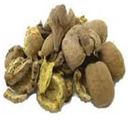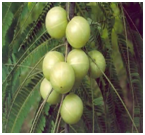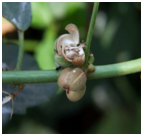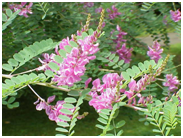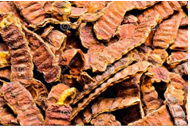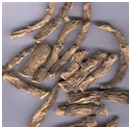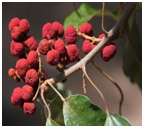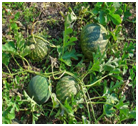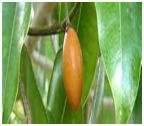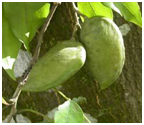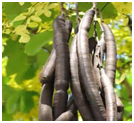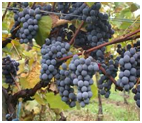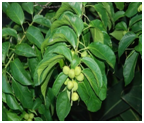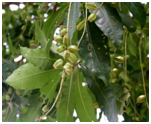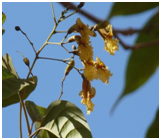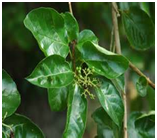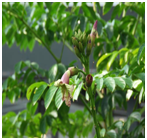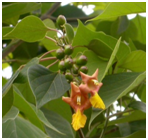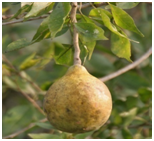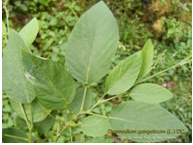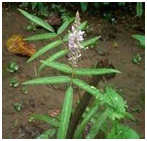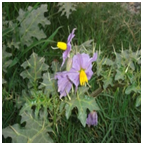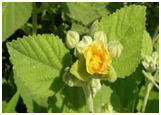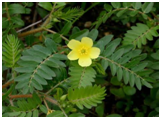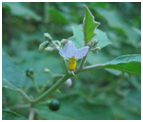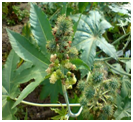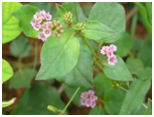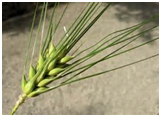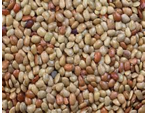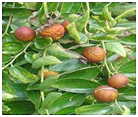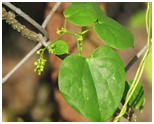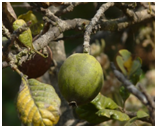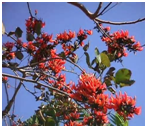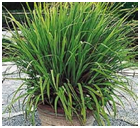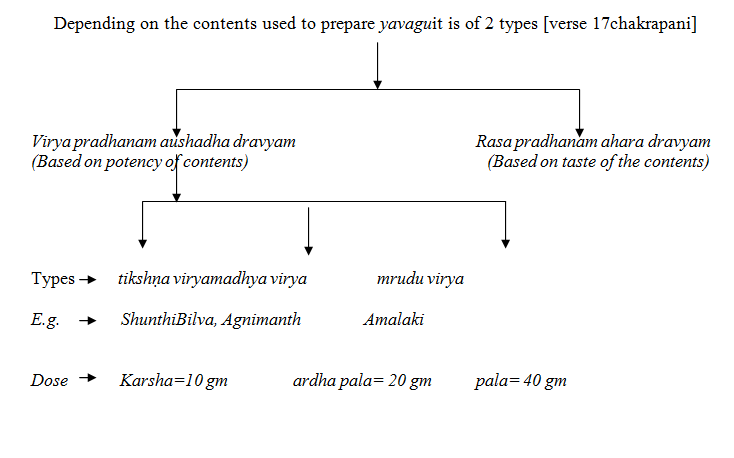Difference between revisions of "Apamarga Tanduliya Adhyaya"
Pallavmishra (talk | contribs) |
|||
| Line 635: | Line 635: | ||
=== ''Vidhi Vimarsha'' === | === ''Vidhi Vimarsha'' === | ||
<div style="text-align:justify;"> | <div style="text-align:justify;"> | ||
| − | In the previous chapter | + | In the previous chapter ([[Deerghanjiviteeya Adhyaya]] (Quest for longevity), plants and their different useful parts have been explained. There are however some other plants like ''Pippali'' (Piper longum Linn.), ''Maricha'' (Piper nigrum Linn.) which are also useful for panchakarma (five purificatory procedures), but not described in that chapter. Hence in this chapter remaining drugs which are useful for various bio-purificatory therapies and the objectives of applications are enumerated. The drugs mentioned in each group can be used either individually or in combination of as many as are available. [Su.Su.36/33] |
==== Herbs used For ''Shirovirechana''(catharsis of cephalic region) ==== | ==== Herbs used For ''Shirovirechana''(catharsis of cephalic region) ==== | ||
Revision as of 12:36, 19 April 2018
| Section/Chapter | Sutra Sthana Chapter 2 |
|---|---|
| Tetrad/Sub-section | Bheshaja Chatushka |
| Preceding Chapter | Deerghanjiviteeya Adhyaya |
| Succeeding Chapter | Aragvadhiya Adhyaya |
| Other Sections | Nidana Sthana, Vimana Sthana, Sharira Sthana, Indriya Sthana, Chikitsa Sthana, Kalpa Sthana, Siddhi Sthana |
(Sutra Sthana Chapter 2, Chapter on the Dehusked Seeds of Apamarga)
Abstract
Keywords: Apamarga tanduliya, dehusked seeds, shirovirechana, vamana, virechana, yavagu kalpana (gruel), purification therapies.
Introduction
It further lists down Panchakarma dravya (drugs useful for purificatory procedures), description of yavagu (food preparation) and characteristics of an ideal physician eligible to administer these procedures and preparations.
Sanskrit Text, Transliteration and English Translation
अथातोऽपामार्गतण्डुलीयमध्यायं व्याख्यास्यामः||१||
इति ह स्माह भगवानात्रेयः||२||
athātō'pāmārgataṇḍulīyamadhyāyaṁ vyākhyāsyāmaḥ||1||
iti ha smāha bhagavānātrēyaḥ||2||
athAto~apAmArgataNDulIyamadhyAyaM vyAkhyAsyAmaH||1||
iti ha smAha bhagavAnAtreyaH||2||
Lord Atreya said, we will now describe the chapter Apamarga Tanduliya. [1-2]
Herbs used for Shirovirechana (Catharsis of Cephalic Region) and their Indications
अपामार्गस्य बीजानि पिप्पलीर्मरिचानि च| विडङ्गान्यथ शिग्रूणि सर्षपांस्तुम्बुरूणि च||३||
अजाजीं चाजगन्धां च पीलून्येलां हरेणुकाम्| पृथ्वीकां सुरसां श्वेतां कुठेरकफणिज्झकौ||४||
शिरीषबीजं लशुनं हरिद्रे लवणद्वयम्| ज्योतिष्मतीं नागरं च दद्याच्छीर्षविरेचने||५||
गौरवे शिरसः शूले पीनसेऽर्धावभेदके| क्रिमिव्याधावपस्मारे घ्राणनाशे प्रमोहके||६||
apāmārgasya bījāni pippalīrmaricāni ca| viḍaṅgānyatha śigrūṇi sarṣapāṁstumburūṇi ca||3||
ajājīṁ cājagandhāṁ ca pīlūnyēlāṁ harēṇukām| pr̥thvīkāṁ surasāṁ śvētāṁ kuṭhērakaphaṇijjhakau||4||
śirīṣabījaṁ laśunaṁ haridrē lavaṇadvayam| jyōtiṣmatīṁ nāgaraṁ ca dadyācchīrṣavirēcanē||5||
gauravē śirasaḥ śūlē pīnasē'rdhāvabhēdakē| krimivyādhāvapasmārē ghrāṇanāśē pramōhakē||6||
apAmArgasya bIjAni pippalIrmaricAni ca| viDa~ggAnyatha shigrUNi sarShapAMstumburUNi ca||3||
ajAjIM cAjagandhAM ca pIlUnyelAM hareNukAm| pRuthvIkAM surasAM shvetAM kuTherakaphaNijjhakau||4||
shirIShabIjaM lashunaM haridre lavaNadvayam| jyotiShmatIM nAgaraM ca dadyAcchIrShavirecane||5||
gaurave shirasaH shUle pInase~ardhAvabhedake| krimivyAdhAvapasmAre ghrANanAshe pramohake||6||
In order to eliminate vitiating factors from the head along with gourava (heaviness of the head), shirahshoola (headache), pinasa (rhinitis), ardhavabhedaka (hemicrania), krimi (infections), apasmara (epilepsy), ghrananasha (anosmia), pramoha (fainting), one should prescribe, seeds of Apamarga (Achyranthes aspera Linn.), Pippali (Piper longum Linn.), Maricha (Piper nigrum Linn.), Vidanga (Embelia ribes Burm.f.), Shigru (Moringa oleiferaLam.), Sarshapa (Brassica juncea Czern.& Coss), Tumburu(Zanthoxylum alatum (Roxb.) DC ), Ajaji (Cuminum cyminum Linn.), Ajagandha (Gynandropsis gynandra (L.) Briquet), Pilu (Salvadora persica Linn.), Ela(Elettaria cardamomum Maton), Harenu (Vitex negundo Linn.), Prithvika (Gardenia lucida Roxb.), Surasa (Ocimum sanctum Linn. ), Shweta (Ocimum sanctum Linn), Kutheraka (Orthosiphon pallidus), Phanijjaka (Ocimum canum Sims), seeds of Shireesha (Albizzia lebbeck (L.) Benth), Lashuna (Allium sativum Linn.), Haridra dwaya(Haridra (Curcuma longa Linn.), Daruharidra(Berberis aristata), Lavana dwaya (Saindhava, Souvarchala), Jyotishmati (Celastrus panniculatus), Nagara (Zingiber officinale Rosc.). [3-6]
Herbs used for Therapeutic Emesis
मदनं मधुकं निम्बं जीमूतं कृतवेधनम्| पिप्पलीकुटजेक्ष्वाकूण्येलां धामार्गवाणि च||७||
उपस्थिते श्लेष्मपित्ते व्याधावामाशयाश्रये| वमनार्थं प्रयुञ्जीत भिषग्देहमदूषयन्||८||
madanaṁ madhukaṁ nimbaṁ jīmūtaṁ kr̥tavēdhanam| pippalīkuṭajēkṣvākūṇyēlāṁ dhāmārgavāṇi ca||7||
upasthitē ślēṣmapittē vyādhāvāmāśayāśrayē| vamanārthaṁ prayuñjīta bhiṣagdēhamadūṣayan||8||
madanaM madhukaM nimbaM jImUtaM kRutavedhanam| pippalIkuTajekShvAkUNyelAM dhAmArgavANi ca||7||
upasthite shleShmapitte vyAdhAvAmAshayAshraye| vamanArthaM prayu~jjIta bhiShagdehamadUShayan||8||
Herbs used for Therapeutic Purgation
त्रिवृतां त्रिफलां दन्तीं नीलिनीं सप्तलां वचाम्| कम्पिल्लकं गवाक्षीं च क्षीरिणीमुदकीर्यकाम्||९||
पीलून्यारग्वधं द्राक्षां द्रवन्तीं निचुलानि च| पक्वाशयगते दोषे विरेकार्थं प्रयोजयेत्||१०||
trivr̥tāṁ triphalāṁ dantīṁ nīlinīṁ saptalāṁ vacām| kampillakaṁ gavākṣīṁ ca kṣīriṇīmudakīryakām||9||
pīlūnyāragvadhaṁ drākṣāṁ dravantīṁ niculāni ca| pakvāśayagatē dōṣē virēkārthaṁ prayōjayēt||10||
trivRutAM triphalAM dantIM nIlinIM saptalAM vacAm| kampillakaM gavAkShIM ca kShIriNImudakIryakAm||9||
pIlUnyAragvadhaM drAkShAM dravantIM niculAni ca| pakvAshayagate doShe virekArthaM prayojayet||10||
Trivrit (Operculina turpethum (Linn.) Silva Manso), Triphala (Three myrobalans), Danti (Baliospermum montanum (Wild.) Muell-Arg.), Nilini (Indigofera tinctoria Linn.), Saptala (Acacia concinna DC.), Vacha (Acorus calamus Linn.), Kampillaka(Mallotus philippensis (Lam.) Muell.- Arg.), Gavakshi (Citrullus colocynthis (Linn.) Schrader), Kshirini (Mimusops hexandra Roxb.), Udakeerya(Pongamia pinnata (Linn.) Pierre), Pilu (Salvadora persica Linn.), Aragwadha (Cassia fistula Linn.), Draksha (Vitis vinifera Linn.), Dravanti (Croton tinglium Linn.), Nichula (Barringtonia acutangula (Linn.) Gaertn.) are the drugs used for purgation when vitiating factors are located in Pakwaashaya (colon).[9-10]
Herbs used in Therapeutic Enema
पाटलां चाग्निमन्थं च बिल्वं श्योनाकमेव च| काश्मर्यं शालपर्णीं च पृश्निपर्णीं निदिग्धिकाम्||११||
बलां श्वदंष्ट्रां बृहतीमेरण्डं सपुनर्नवम्| यवान् कुलत्थान् कोलानि गुडूचीं मदनानि च||१२||
पलाशं कत्तृणं चैव स्नेहांश्च लवणानि च| उदावर्ते विबन्धेषु युञ्ज्यादास्थापनेषु च||१३||
अत एवौषधगणात् सङ्कल्प्यमनुवासनम्| मारुतघ्नमिति प्रोक्तः सङ्ग्रहः पाञ्चकर्मिकः||१४||
pāṭalāṁ cāgnimanthaṁ ca bilvaṁ śyōnākamēva ca| kāśmaryaṁ śālaparṇīṁ ca pr̥śniparṇīṁ nidigdhikām||11||
balāṁ śvadaṁṣṭrāṁ br̥hatīmēraṇḍaṁ sapunarnavam| yavān kulatthān kōlāni guḍūcīṁ madanāni ca||12||
palāśaṁ kattr̥ṇaṁ caiva snēhāṁśca lavaṇāni ca| udāvartē vibandhēṣu yuñjyādāsthāpanēṣu ca||13||
ata ēvauṣadhagaṇāt saṅkalpyamanuvāsanam| mārutaghnamiti prōktaḥ saṅgrahaḥ pāñcakarmikaḥ||14||
pATalAM [1] cAgnimanthaM ca bilvaM shyonAkameva ca| kAshmaryaM shAlaparNIM ca pRushniparNIM nidigdhikAm||11||
balAM shvadaMShTrAM bRuhatImeraNDaM sapunarnavam| yavAn kulatthAn kolAni guDUcIM madanAni ca||12||
palAshaM kattRuNaM caiva snehAMshca lavaNAni ca| udAvarte vibandheShu yu~jjyAdAsthApaneShu ca||13||
ata evauShadhagaNAt sa~gkalpyamanuvAsanam| mArutaghnamiti proktaH sa~ggrahaH pA~jcakarmikaH||14||
Patala (Stereospermum colais (Buch.-Ham.ex Dillw), Agnimantha (Premna corymbosa Rottl.), Bilwa (Aegle marmelos (Linn.) Corr.), Shyonaka (Oroxylumindicum (Linn.)Benth. ex Kurz) Kashmarya (Gmelina arborea Roxb.), Shalaparni(Desmodium gangeticum (Linn.) DC.), Prishnaparni (Uraria picta Desv.), Nidigdhika (Solanum xanthocarpum Schrad. & Wendl.), Bala (Sida cordifolia Linn.), Shwadamshtra (Tribulus terrestris Linn.), Brahati (Solanum indicum auct.non Linn.), Eranda (Ricinus communis Linn.), Punarnava (Boerrhavia diffusa Linn.), Yava (Hordeum vulgare Linn.), Kulattha (Dolichos lablab Linn.), Kola (Ziziphus mauritiana Lam.), Guduchi (Tinospora cordifolia), Madana (Catunaregam spinose (Thunb.) Tirvengadum), Palasha (Butea monosperma (Lam.) Taub.), Kuttrana (Cymbopogon citratus (DC) Stapf), Sneha (fat), and Lavana (salt) are the drugs to be selected for Asthapana( a variety of enema with decoction) in the event of udavarta (conditions caused by the inhibition of natural urges) and vibandha (constipation). These drugs are to be used for anuvasana (another variety of enema with oil /unctuous substances) for the pacification of vitiated vata. Thus the bio-purificatory therapies are mentioned here in brief. [11-14]
Pre-requisites of Panchakarma Procedure
तान्युपस्थितदोषाणां स्नेहस्वेदोपपादनैः| पञ्चकर्माणि कुर्वीत मात्राकालौ विचारयन्||१५||
tānyupasthitadōṣāṇāṁ snēhasvēdōpapādanaiḥ| pañcakarmāṇi kurvīta mātrākālau vicārayan||15||
tAnyupasthitadoShANAM snehasvedopapAdanaiH| pa~jcakarmANi kurvIta mAtrAkAlau vicArayan||15||
In the event of vitiated 'dosha (vitiated factors) brought to koshtha (gut) by oleation and sudation therapies, a physician should administer five bio-purificatory therapies by duly considering the matra (dose) and kala (time). [15]
Yukti (rational therapy)
मात्राकालाश्रया युक्तिः, सिद्धिर्युक्तौ प्रतिष्ठिता| तिष्ठत्युपरि युक्तिज्ञो द्रव्यज्ञानवतां सदा||१६||
mātrākālāśrayā yuktiḥ, siddhiryuktau pratiṣṭhitā| tiṣṭhatyupari yuktijñō dravyajñānavatāṁ sadā||16||
mAtrAkAlAshrayA yuktiH, siddhiryuktau pratiShThitA| tiShThatyupari yuktij~jo dravyaj~jAnavatAM sadA||16||
Therapeutic aptness or rational therapy depends on the matra (dose) and kala(time). Success of the treatment depends on yukti (rational planning). But prior to the application of yukti (rational planning) the physician should always possess complete knowledge about drugs. [16]
Description of various medicated yavagu (gruels)
अत ऊर्ध्वं प्रवक्ष्यामि यवागूर्विविधौषधाः| विविधानां विकाराणां तत्साध्यानां निवृत्तये||१७||
ata ūrdhvaṁ pravakṣyāmi yavāgūrvividhauṣadhāḥ| vividhānāṁ vikārāṇāṁ tatsādhyānāṁ nivr̥ttayē||17||
ata UrdhvaM pravakShyAmi yavAgUrvividhauShadhAH| vividhAnAM vikArANAM tatsAdhyAnAM nivRuttaye||17||
Here after I will explain different gruels prepared with various medicinal herbs to eradicate curable diseases. [17]
पिप्पलीपिप्पलीमूलचव्यचित्रकनागरैः| यवागूर्दीपनीया स्याच्छूलघ्नी चोपसाधिता||१८||
दधित्थबिल्वचाङ्गेरीतक्रदाडिमसाधिता| पाचनी ग्राहिणी, पेया सवाते पाञ्चमूलिकी||१९||
शालपर्णीबलाबिल्वैः पृश्निपर्ण्या च साधिता| दाडिमाम्ला हिता पेया पित्तश्लेष्मातिसारिणाम्||२०||
पयस्यर्धोदके च्छागे ह्रीवेरोत्पलनागरैः| पेया रक्तातिसारघ्नी पृश्निपर्ण्या च साधिता||२१||
दद्यात् सातिविषां पेयां सामे साम्लां सनागराम्| श्वदंष्ट्राकण्टकारीभ्यां मूत्रकृच्छ्रे सफाणिताम्||२२||
विडङ्गपिप्पलीमूलशिग्रुभिर्मरिचेन च| तक्रसिद्धा यवागूः स्यात् क्रिमिघ्नी ससुवर्चिका||२३||
मृद्वीकासारिवालाजपिप्पलीमधुनागरैः| पिपासाघ्नी, विषघ्नी च सोमराजीविपाचिता||२४||
सिद्धा वराहनिर्यूहे यवागूर्बृंहणी मता| गवेधुकानां भृष्टानां कर्शनीया समाक्षिका||२५||
सर्पिष्मती बहुतिला स्नेहनी लवणान्विता| कुशामलकनिर्यूहे श्यामाकानां विरूक्षणी||२६||
दशमूलीशृता कासहिक्काश्वासकफापहा| यमके मदिरासिद्धा पक्वाशयरुजापहा||२७||
शाकैर्मांसैस्तिलैर्माषैः सिद्धा वर्चो निरस्यति| जम्ब्वाम्रास्थिदधित्थाम्लबिल्वैः साङ्ग्राहिकी मता||२८||
क्षारचित्रकहिङ्ग्वम्लवेतसैर्भेदिनी मता| अभयापिप्पलीमूलविश्वैर्वातानुलोमनी ||२९||
तक्रसिद्धा यवागूः स्याद्धृतव्यापत्तिनाशिनी| तैलव्यापदि शस्ता स्यात्तक्रपिण्याकसाधिता||३०||
गव्यमांसरसैः साम्ला विषमज्वरनाशिनी| कण्ठ्या यवानां यमके पिप्पल्यामलकैः शृता||३१||
ताम्रचूडरसे सिद्धा रेतोमार्गरुजापहा| समाषविदला वृष्या घृतक्षीरोपसाधिता||३२||
उपोदिकादधिभ्यां तु सिद्धा मदविनाशिनी| क्षुधं हन्यादपामार्गक्षीरगोधारसैः शृता||३३||
pippalīpippalīmūlacavyacitrakanāgaraiḥ| yavāgūrdīpanīyā syācchūlaghnī cōpasādhitā||18||
dadhitthabilvacāṅgērītakradāḍimasādhitā| pācanī grāhiṇī, pēyā savātē pāñcamūlikī||19||
śālaparṇībalābilvaiḥ pr̥śniparṇyā ca sādhitā| dāḍimāmlā hitā pēyā pittaślēṣmātisāriṇām||20||
payasyardhōdakē cchāgē hrīvērōtpalanāgaraiḥ| pēyā raktātisāraghnī pr̥śniparṇyā ca sādhitā||21||
dadyāt sātiviṣāṁ pēyāṁ sāmē sāmlāṁ sanāgarām| śvadaṁṣṭrākaṇṭakārībhyāṁ mūtrakr̥cchrē saphāṇitām||22||
viḍaṅgapippalīmūlaśigrubhirmaricēna ca| takrasiddhā yavāgūḥ syāt krimighnī sasuvarcikā||23||
mr̥dvīkāsārivālājapippalīmadhunāgaraiḥ| pipāsāghnī, viṣaghnī ca sōmarājīvipācitā||24||
siddhā varāhaniryūhē yavāgūrbr̥ṁhaṇī matā| gavēdhukānāṁ bhr̥ṣṭānāṁ karśanīyā samākṣikā||25||
sarpiṣmatī bahutilā snēhanī lavaṇānvitā| kuśāmalakaniryūhē śyāmākānāṁ virūkṣaṇī||26||
daśamūlīśr̥tā kāsahikkāśvāsakaphāpahā| yamakē madirāsiddhā pakvāśayarujāpahā||27||
śākairmāṁsaistilairmāṣaiḥ siddhā varcō nirasyati| jambvāmrāsthidadhitthāmlabilvaiḥ sāṅgrāhikī matā||28||
kṣāracitrakahiṅgvamlavētasairbhēdinī matā| abhayāpippalīmūlaviśvairvātānulōmanī ||29||
takrasiddhā yavāgūḥ syāddhr̥tavyāpattināśinī| tailavyāpadi śastā syāttakrapiṇyākasādhitā||30||
gavyamāṁsarasaiḥ sāmlā viṣamajvaranāśinī| kaṇṭhyā yavānāṁ yamakē pippalyāmalakaiḥ śr̥tā||31||
tāmracūḍarasē siddhā rētōmārgarujāpahā| samāṣavidalā vr̥ṣyā ghr̥takṣīrōpasādhitā||32||
upōdikādadhibhyāṁ tu siddhā madavināśinī| kṣudhaṁ hanyādapāmārgakṣīragōdhārasaiḥ śr̥tā||33||
pippalIpippalImUlacavyacitrakanAgaraiH| yavAgUrdIpanIyA syAcchUlaghnI copasAdhitA||18||
dadhitthabilvacA~ggerItakradADimasAdhitA| pAcanI grAhiNI, peyA savAte pA~jcamUlikI||19||
shAlaparNIbalAbilvaiH pRushniparNyA ca sAdhitA| dADimAmlA hitA peyA pittashleShmAtisAriNAm||20||
payasyardhodake cchAge hrIverotpalanAgaraiH| peyA raktAtisAraghnI pRushniparNyA ca sAdhitA||21||
dadyAt sAtiviShAM peyAM sAme sAmlAM sanAgarAm| shvadaMShTrAkaNTakArIbhyAM mUtrakRucchre saphANitAm||22||
viDa~ggapippalImUlashigrubhirmaricena ca| takrasiddhA yavAgUH syAt krimighnI sasuvarcikA||23||
mRudvIkAsArivAlAjapippalImadhunAgaraiH| pipAsAghnI, viShaghnI ca somarAjIvipAcitA||24||
siddhA varAhaniryUhe yavAgUrbRuMhaNI matA| gavedhukAnAM bhRuShTAnAM karshanIyA samAkShikA||25||
sarpiShmatI bahutilA snehanI lavaNAnvitA| kushAmalakaniryUhe shyAmAkAnAM virUkShaNI||26||
dashamUlIshRutA kAsahikkAshvAsakaphApahA| yamake madirAsiddhA pakvAshayarujApahA||27||
shAkairmAMsaistilairmAShaiH siddhA varco nirasyati| jambvAmrAsthidadhitthAmlabilvaiH sA~ggrAhikI matA||28||
kShAracitrakahi~ggvamlavetasairbhedinI matA| abhayApippalImUlavishvairvAtAnulomanI ||29||
takrasiddhA yavAgUH syAddhRutavyApattinAshinI| tailavyApadi shastA syAttakrapiNyAkasAdhitA||30||
gavyamAMsarasaiH sAmlA viShamajvaranAshinI| kaNThyA yavAnAM yamake pippalyAmalakaiH shRutA||31||
tAmracUDarase siddhA retomArgarujApahA| samAShavidalA vRuShyA ghRutakShIropasAdhitA||32||
upodikAdadhibhyAM tu siddhA madavinAshinI| kShudhaM hanyAdapAmArgakShIragodhArasaiH shRutA||33||
- Gruel for colic pain: Gruel prepared with Pippali (Piper longum Linn.), Pippalimoola (Piper longum Linn.), Chavya (Piper chaba Hunter.), Chitraka (Plumbago zeylanica Linn.) and Nagara (Zingiber officinale Rosc) stimulates agni (digestion power) and cures colic pain. [18]
- Digestive and grahi gruel: Gruel prepared with Dadhittha (Limonia acidissima Linn.), Bilwa (Aegle marmelos), Changeri (Oxalis corniculata Linn.), Takra (buttermilk), Dadima (Punica granatum Linn.) are pachana (digestive) and grahi (promoting absorption of liquid). [19]
- Vata pacifying gruel: Whereas those prepared with Panchamoola (Five root drugs) are beneficial in disorders of vata.[19]
- Gruel used in diarrhea due to pitta and kapha: Gruel prepared with Shalaparni(Desmodium gangeticum DC.), Bala (Sida cordifolia), Bilwa (Aegle marmelos), Prishnaparni (Uraria picta Desv.), Amla dadima (sour Punica granatum) is beneficial in pitta and shleshmaja atisara (diarrhoea with dominant pitta and kapha).[20]
- Gruel in blood tinged diarrhoea : Gruel prepared with half part of water, half part of chaga dugdha (Goats milk), Hribera (Pavonia odorata Wild.), Utpala (Nymphaea alba Linn.), Nagara (Zingiber officinale Rosc.) and Prishniparni (Uraria picta Desv.) is beneficial in raktatisaara (blood tinged diarrhea/dysentry). [21]
- Gruel for diarrhoea with indigestion: Whereas in the case of diarrhea associated with Ama, gruel prepared with Ativisha (Aconitum heterophyllum), Amla dadima (Sour pomegranate Punica granatum Cim.)and Nagara (Zingiber officinale Rosc.) is beneficial.[22]
- Gruel for mutrakrichchra(dysuria): In the case of 'mutrakrichchra(dysuria) one should use the gruel prepared with Shwadamshtra (Tribulus terrestris), Kantakari (Solanum xanthocarpum Schrad.& Wendl.), and Phanita (a preparation of sugarcane).[22]
- Gruel for krimi (worm infestation): Gruel prepared with Vidanga (Embelia ribes), Pippalimoola (Piper longum), Shigru (Moringa oleifera Lam.), Maricha (Piper nigrum) and Souvarchala lavana (black salt) along with buttermilk is beneficial in treating krimi (worm infestations). [23]
- Gruel for excess thirst: Gruel prepared using Mridvika (Vitis vinifera Linn.), Sariva (Hemidesmus indicus R. Br.), Laja (popped sorghum), Pippali (Piper longum) , madhu (honey), Nagara (Zingiber officinale Rosc.) relieves thirst. [24]
- Gruel for toxicity in skin diseases: When it is further cooked with Somaraji (Psoralea corylifolia Linn.) it acts as anti-toxic particularly in skin diseases. [24]
- Gruel for nourishment: Gruel prepared with pork extract is nourishing. [25]
- Gruel for weight loss: The one which is prepared with fried Gavedhuka (Coix lacryma.) along with honey is an effective medication for weight loss.[25]
- Gruel for unctuousness: For the snehana (unctuousness) one should use the gruel prepared using tila (Sesamum indicum Linn.) and lavana (salt).[26]
- Gruel for dryness: whereas for rukshna (dryness/unoiliness) one can prepare the gruel using kusha (Desmostachya bipinnata Staff.), Amalaki (Emblica officinalis Gaertn.) and Shyamaka (Punicum italicum Linn.)[26]
- Gruel for Respiratory diseases: Gruel prepared with Dashamoola (ten root drugs) is beneficial in hikka (hiccough), shwasa (dyspnea), kasa (cough) and is considered as kaphahara (reduces kapha) [27]
- Gruel for alleviating pain in colon: The one prepared using ghee, oil and madira (alcoholic beverage) alleviates pain in the colon [27]
- Gruel for constipation: For the easy evacuation of stool one can use gruel prepared out of vegetables, meat, tila (Sesamum indicum) and masha (Phaseolus mungo Linn.) [28]
- Gruel for diarrhoea: Gruel prepared using jambu (Syzygium cumini Skeels), seeds of amra (Mangifera indica Linn.), Amla Dadhitha (Limonia acidissima Linn.) and bilwa (Aegle marmelos Corr.) is grahi (promoting absorption of liquid). [28]
- Gruel for cathartic action: For the bhedana karma (cathartic) gruel prepared using kshara (alkali), chitraka (Plumbago zeylanica Linn.), hingu (Ferula narthex Boiss ) and amlavetasa (Garcinia pedunculata Roxb.) is beneficial.[29]
- Gruel for flatulence: Gruel prepared out of Abhaya (Terminalia chebula Retz.), Pippalimoola (Piper longum Linn.) and Vishwa (Zingiber officinale Rosc.) is vatanulomana (eliminates flatus).[29]
- Gruel for adverse effects due to improper administration of ghee: Gruel prepared with buttermilk eradicates untoward effects caused by ghritavyapada (improper administration of ghee).[30]
- Gruel for adverse effects due to improper administration of oil: Intake of gruel with buttermilk and pinyaka (oil cake) alleviates untoward effects caused by the improper administration of oil.[30]
- Gruel for pyrexia of irregular pattern: Gruel prepared using cow meat and sour Dadima (Punica granatum) is beneficial in vishamajwara (Type of fever).[31]
- Gruel for diseases of throat: Gruel prepared with Yava (Hordeum vulgare),ghee, oil, Pippali (Piper longum Linn.) and Amalaki(Phyllanthus emblica Linn.)) is useful for throat.[31]
- Gruel for disorders of male genital tract: Gruel prepared using Tamrachuda (chicken meat) is said to be beneficial in seminal disorder[32]
- Aphrodisiac Gruel: Gruel prepared using Masha (Phaseolus mungo Linn.) along with ghee and milk is aphrodisiac. [32]
- Gruel for narcosis: One prepared with Upodika (Basella rubra Linn.) and curd cures mada (narcosis). [33]
- Gruel for excess hunger: Gruel prepared with Apamarga (Achyranthes aspera Linn.), milk and extract of inguinal flesh is beneficial in excessive hunger. [33]
तत्र श्लोकः- अष्टाविंशतिरित्येता यवाग्वः परिकीर्तिताः| पञ्चकर्माणि चाश्रित्य प्रोक्तो भैषज्यसङ्ग्रहः||३४||
tatra ślōkaḥ- aṣṭāviṁśatirityētā yavāgvaḥ parikīrtitāḥ| pañcakarmāṇi cāśritya prōktō bhaiṣajyasaṅgrahaḥ||34||
tatra shlokaH- aShTAviMshatirityetA yavAgvaH parikIrtitAH| pa~jcakarmANi cAshritya prokto bhaiShajyasa~ggrahaH||34||
Thus after summarizing,
All the twenty eight varieties of gruel have been described and the drugs administered in five bio-purificatory therapies have been enumerated in brief. [34]
पूर्वं मूलफलज्ञानहेतोरुक्तं यदौषधम्| पञ्चकर्माश्रयज्ञानहेतोस्तत् कीर्तितं पुनः||३५||
pūrvaṁ mūlaphalajñānahētōruktaṁ yadauṣadham| pañcakarmāśrayajñānahētōstat kīrtitaṁ punaḥ||35||
pUrvaM mUlaphalaj~jAnahetoruktaM yadauShadham| pa~jcakarmAshrayaj~jAnahetostat kIrtitaM punaH||35||
Though in the previous chapter description about fruits, roots and other medicinal plants have been mentioned, still from the view of bio-purificatory therapies description of drugs are included. [35]
Qualities of a Practicing Physician
स्मृतिमान् हेतुयुक्तिज्ञो जितात्मा प्रतिपत्तिमान्| भिषगौषधसंयोगैश्चिकित्सां कर्तुमर्हति||३६||
smr̥timān hētuyuktijñō jitātmā pratipattimān| bhiṣagauṣadhasaṁyōgaiścikitsāṁ kartumarhati||36||
smRutimAn hetuyuktij~jo jitAtmA pratipattimAn| bhiShagauShadhasaMyogaishcikitsAM kartumarhati||36||
A physician endowed with good smriti (memory), hetu-yuktijna (knowledge of cause and effect of disease), jitatma (self restraint), and pratipattiman (presence of mind), is entitled to practice Ayurveda through the combination of various drugs. [36]
इत्यग्निवेशकृते तन्त्रे चरकप्रतिसंस्कृते श्लोकस्थानेऽपामार्गतण्डुलीयो नाम द्वितीयोऽध्यायः||२||
ityagnivēśakr̥tē tantrē carakapratisaṁskr̥tē ślōkasthānē'pāmārgataṇḍulīyō nāma dvitīyō'dhyāyaḥ||2||
ityagniveshakRute tantre carakapratisaMskRute shlokasthAne~apAmArgataNDulIyo nAma dvitIyo~adhyAyaH||2||
Thus ends the second chapter named Apamarga Tanduliya of Sutra Sthana of Agnivesha’s work as redacted by Charaka.[ end of chapter 2]
Tattva Vimarsha
- Body purification is an important method for disease management. Shirovirachana (catharsis of the cephalic region) is indicated for disease in head region. Vamana (therapeutic emesis) is indicated for vitiated kapha disorders. Virechana (therapeutic purgation) is indicated for vitiated pitta disorders. Aasthapana (enema with decoction) and Anuvasana (enema with oil/unctuous substances) are indicated in vitiation of disorders of vata.
- Specific yavagu (gruel) processed with various herbs are indicated for treatment of specific curable diseases as well as re-kindling jatharagni (digestive powers).
- Physicians require good memory, knowledge of etiology of diseases, self-restraint, and good presence of mind to be able to formulate Ayurvedic preparations and administer them to the patients.
Vidhi Vimarsha
In the previous chapter (Deerghanjiviteeya Adhyaya (Quest for longevity), plants and their different useful parts have been explained. There are however some other plants like Pippali (Piper longum Linn.), Maricha (Piper nigrum Linn.) which are also useful for panchakarma (five purificatory procedures), but not described in that chapter. Hence in this chapter remaining drugs which are useful for various bio-purificatory therapies and the objectives of applications are enumerated. The drugs mentioned in each group can be used either individually or in combination of as many as are available. [Su.Su.36/33]
Herbs used For Shirovirechana(catharsis of cephalic region)
The drug Apamarga (Achyranthes aspera Linn.) is considered to be the potential drug to eliminate vitiating factors from head. [Ca.Su.25/40] Surasa (Ocimum sanctum Linn.), Shweta Surasa (Ocimum sanctum Linn.), Phanijjaka (Origanum majorana), Kutheraka (Ocimum canum) are the drugs of Surasadi gana. [Su.Su.38], and are said to be krimighna (antimicrobial) and kaphaghna (which alleviate phlegm). Chakrapanidatta terms Ajagandha as Ajamoda (Apium graveolens Linn.). The reference of krimi(microbe) in the context of those invading the head andnotofthebody[1][ ] [ verse 1-6]
Herbs used in therapeutic emesis
These refer to the plants used for emesis for a disease that originates from the site of kapha; the upper portion of amashaya (stomach). Pitta vitiation may not require emesis, but when this aggravated pitta reaches the site of kapha, then it is to be eliminated through emesis. Different sites or parts of the body are associated with different dosha. So when a vitiated dosha leaves its own “site” and occupies the site of another dosha, then it is to be treated on the lines of treatment for the latter. [Ca.Ci.3/142] Among all plants enumerated for emesis Madnaphala (Catunaregam spinosa ) is considered important owing to its lesser side effects[Ca.Ka.1/13] and its strong effect. [Ca.Su.25/40].
Therefore, it is widely used in clinical practice. Apart from Madanaphala, five other drugs, and in total 355 formulations are described; One of these formulations is Kritavedhana (Luffa acutangula) kalpa (formulations). It is specially indicated to be effective for treating cases of kushtha (skin diseases), garavisha (slow poison) etc for therapeutic emesis.[2][ ] [verse 7-8]
Herbs for virechana [therapeutic purgation]
Evacuation of the fecal matter and other accumulated dosha(vitiated factors) in the lower gastrointestinal tract through the anal route is known as virechana karma(Ch. Ka.1/4). Among the three dosha the morbid accumulation of pitta dosha is best eliminated by this procedure. Abnormal accumulation of kapha dosha in the lower gastro-intestinal tract or pitta sthana (place) is also treated by the virechana karma. This also includes treatment of vitiated dosha of the stomach, small intestine, liver and gall bladder, as well as a method of bringing them to the gastro-intestinal tract for their eventual expulsion from the body through rectum. This process not only eradicates the diseases of pitta and blood, but also it helps in rejuvenating all the tissues and organs in the abdomen, improving skin complexion, imparting longevity and increasing immunity.[Ca.Su.15/23; Su.Ci.33/18](Cha. Su. 15/23; Su. Chi. 33/18).
The selection of medicines for purgation depends upon, softness or hardness of bowel movements and constitution of the patient. Among the plants for purgation, Trivrit (Operculina turpethum) is considered the best because it causes comfortable evacuation. [Ca.Su.25/40].[3][ ] Operculina turpethum has anthraquinone glycoside also known as emodin. Unabsorbed in the small intestine, they are passed to the colon where bacteria liberates the active form, which either acts locally or is absorbed into circulation and gets excreted in bile to act on small intestine. The active principle is believed to work on myenteric plexus to increase peristalsis and decrease segmentation. Cassia fistula’s laxative action comes from a group of well documented compounds called anthraquinones that are found in all cassia and senna plants in varying degrees.
Eranda (Ricinus communis) is used widely as purgative. It mainly contains triglyceride of ricinoleic acid which is a polar long chain fatty acid. It is hydrolysed in the ileum by lipase to ricinoleic acid and glycerol. It is believed to irritate the mucosa and stimulate intestinal contractions.[4] [ ] [ verse 9-10]
Herbs used in enema
Administration of liquid medicine through the rectal, urethral or vaginal route is collectively known by the term basti (enema) (Sha. Ut. 5/1). In general basti (enema) refers to the administration of medicine through any of the above said routes, but more particularly it refers to the therapeutic enema using the decoction through the rectal route. Administration of medicine done through the urethral or vaginal route is specifically known by the name uttara basti. Moreover the procedure is also practiced to administer the medicine into a sinus wound, where it is referred by the name vrana basti(wound enema).
Basti(enema) is a prime procedure among purificatory procedures. It is described as the best line of treatment to cure the imbalances of vata. Simultaneously it is also true that this procedure is equally effective in rectifying the abnormal accumulation of pitta as well as kapha dosha.
Depending upon the composition of medicines used in the administration of enema, it is said to be of two types: asthapana or niruha (with decoction) and anuvasana(with oil).
The decoction of herbs used for niruha or asthapana helps in keeping the body healthy as well as prolongs the life span. The enema administered using such herbs is referred as asthapana basti (Su. Chi. 35/17-18). Likewise, the enema administered predominantly containing sneha (oil) is known as anuvasana basti. Among these two types of enema, niruha (decoction enema) is considered superior to anuvasana (oil enema) because it is more effective in the elimination of vitiated factors. Details about these drugs have been mentioned in Vimana Sthana (Cha. Vi. 8/ 138-144).
The pharmacodynamics of systemic effect of basti (enema) may be understood through the absorption mechanism, concept of systems biology, neural stimulation mechanism, and excretory mechanism. As it is a homogenous emulsion mixture of honey, saindhava (salt), sneha dravya (oil/unctuous material), kalka (paste of drugs), and decoction of crude drugs which is given through rectum. Through rectal route large quantity of drugs can be delivered for systemic circulation. The concept of systems biology is that a change at cellular level can bring changes in tissues, organs and consequently in the whole body. As per recent advancements in medicine, the intestine not only is a highly vascular organ, but is also a highly innervated organ that forms an "enteric nervous system" (ENS). ENS may work synergistically with the central nervous system of body. The cleansing action of basti (enema) is related to the facilitation of excretion of morbid substances responsible for the disease process into the colon, from where it is evacuated.[5] [ ] [verse 11-14]
Panchakarma therapy
The Sanskrit term Panchakarma denotes five therapeutic procedures. Pancha(five), and karma (work) refer to the therapy that brings about homeostasis. Vamana (emesis), virechana (purgation), asthapana basti (enema), anuvasana basti (purgation) and nasya (nasal therapy) are the five procedures comprising Panchakarma. Sushruta enumerates vamana (emesis), virechana (purgation), basti (enema), nasya (nasal therapy) and raktamokshana (blood-letting) under five purificatory procedure.
Besides these five purificatory procedures, there are several other therapies like ashchotana, a method of administering medicine in to the eye that are capable of bringing about evacuation of the morbid vitiated factors from the body. However, only five major procedures are referred as Panchakarma procedures. Ability of evacuation, superiority of efficacy, and enormity of the procedure, target dosha (vitiated factor) eradication and various other actions are characteristics of Panchakarma. Though specific procedures like anjana and ashchotana (application of medicine to eye) are capable of evacuating morbid vitiated factors, their efficacy is minimum and restricted to one organ. That is why these procedures are not enlisted in the class of Panchakarma treatment.
Elimination of vitiated factors from the body is the main aim of Panchakarma. Pre-therapeutic procedures, snehana (oleation) and swedana (sudation) are done to shift dosha from peripheral tissues to gut for removal by Panchakarma. There are certain situations in which snehana (oleation) and swedana (sudation) karma may not be necessary before administering bio-purificatory measures. In suitable cases and at appropriate times, a physician is required to eliminate, vitiated factors from gastro-intestinal tract, dominated by kapha, responsible for causing fever by using emetic therapy. In this case emesis is administered even without oleation and sudation therapy.
Administration of fatty substances either through the internal route or external route is referred to as snehana chikitsa (oleation). Before evacuation, oleation helps in the mobilization of vitiated factors from the site of morbidity to the site of elimination. The procedure of inducing perspiration by different methods of applying heat to the body is known as swedana (sudation). This procedure helps in the mobilization of vitiated factors into the gastro-intestinal tract from where they are eliminated out of the body. These two preliminary procedures are termed as purvakarma and help in easy and effective administration of the five eliminatory procedures of Panchakarma. These preliminary procedures do not eliminate vitiated factors out of the body, whereas Panchakarma (five eliminatory) therapies have direct role in expelling out vitiated factors. Hence these two preliminary procedures cannot be enumerated under Panchakarma. [15]
Medicated gruels
Shodhana (purificatory) procedures are likely to cause debility in recipients by decreasing the functions of agni. There are specific dietetic regimen prescribed such as samsarjana karma that could restore normal functions of agni. Just as a small particle of fire kindled with the help of grass, cow dung etc. starts fire, similarly appetite is enhanced and stabilized with the help of medicated gruel [Ca.Si.1/12-13] [17]
In total, 28 gruels are explained which are to be used after the administration of Panchakarma to help re-kindle the digestive fire, simultaneously providing nutrition to the body. Gruels are made of two types of ingredients- cereals and herbs. Rice, barley and other cereals are major food staples, whereas herbs having medicinal properties are second type of ingredients known as veerya pradhana (potency). These herbs are typically classified by their potency - mridu(mild), madhyama (medium) and teekshna (strong). Amalaki (Emblica officinalis), Bilwa (Aegle marmelose), Shunthi (Zingiber officinalis) are respective examples for these three potencies. The detailed methods of preparation of gruel, quantity of water, proportion of medicaments etc. are to be referred from Sudashastra (text book on cookery). [17]
A proper diet is considered more effective than a hundred medicines and no medication will help a patient who does not observe a strict regimen of diet. In modern science, food articles are primarily classified by their chemical composition such as carbohydrates, proteins, fats, vitamins, minerals etc. But in Ayurveda, such classification is based on the biological action of the food articles and their rasa (taste). For example, while modern science may treat all varieties of rice as one group on the basis of their carbohydrate content, Ayurveda considers that freshly harvested rice, heavy for digestion and aggravates kapha, while old rice stored over six months is considered to be light and easier to digest for an average person. According to modern science, yavagu (gruel) considered sources of carbohydrates, but according to the Ayurveda, these gruels not only have nutritive value but also help in curing diseases. Thus, yavagu kalpana (gruel preparation process), a recommended post purificatory formulation for helping in kindling digestive fire, also tones the intestine besides giving the nutrition. [18-33]
General use and applicability of drugs in relation to bio-purificatory therapies have been described in the first chapter. But in this chapter detailed explanation of these five bio-purificatory therapies along with their particular drug index have been provided. [35]
Chart 1: Anna Kalpana (Verse 2/ 17 Chakrapani)
| Sr. No. | Anna kalpana (type of recipe) | Amount of water to be added for cooking |
|---|---|---|
| 1. | vilepi | 4 times the quantity of dravya(food material) |
| 2. | annam | 5 times the quantity of dravya(food material) |
| 3. | yavagu | 6 times the quantity of dravya(food material) |
| 4. | peya | 14 times the quantity of dravya(food material) |
| 5. | manḍa | 14 times the quantity of dravya(food material) |
Chart 2: Types of Yavagu
Further reading and reference books
- Acharya Shrinivas Vamana Karma during the Attack of Bronchial Asthma; Ayurmedline; Sixth edition.
- Ashtanga Hridya of Vagbhatacharya; Text with Sanskrit Commentary ‘Sarvanaga sundari’; Edited by Pt. Hari Sadashiva Shastri Paradakara, Published by Nirany Sagar press, Mumbai, Sixth revised edition in 1939. Rprinted by Chaukambha Surabharati Prakashana, Varanasi, 1997.
- Bhavaprakasha of Bhavamishra, Text with Vidyotini Hindi Commentary; Edited by Mishra Brahmashanakara; Chaukhambha Sanskrit Samsthana; Fifth edition, 1980.
- Bhagavan Bhise and Singh Gurdip; A clinical study on the Role of Madhutailika Basti and Kokilakshadi Churna in the Management of Vataja Shukradushti with special reference to Teratozoospermia; Ayurmedline, Volume 2 May 2001.
- Charaka samhita of Agnivesha, Redacted by Charaka and Dridhabala; Text with Sanskrit Commentary of Chakrapanidatta, Edited by Vaidya Yadavaji Trikamaji Acharya, Published by Nirany Sagara Press, Mumbai, Third revised edition in 1941. Reprinted by Chaukambha Surabharati Prakashana, Varanasi; 1984.
- Chakradatta of Chakrapani; Chaukambha orientalia, Varanasi; 1992
- Dhanukkar Sharadini, Thatte Urmila; The fourth Dimension Time; Ayurveda Unraveled; National Book Trust, India, 1996.
- Savanur H.V.; A Hnad Book of Ayurvedic Materia medica; Volume 1; Jathar and Sons, Maruthi street, Belgaum; 1950.
- Haridas Shreedhar Kasture; Ayurvediya Panchakarma Vijnana; Baidyanath Ayurveda Bhavan Limited; 1979.
- Sharangadhara; Sharangadhara Samhita; Translated inti English by Srikanthamurthy K.R.; Chaukambha Orientalia, Varanasi; 1997.
- Singh R.H. The classical Ayurvediya Panchakarma Therapy; Recent advances in Panchakarma Therapy; Chaukamabha Sanskrit Series Office; First edition, 1992.
- ushruta Samhita of Sushruta, Text with Sanskrit Commentary ‘Nibandhasamgraha’ of Dalhana, Edited by Jadavaji Trikamaji Acharaya, Published by Nirnaya Sagar Press, Mumbai, Third edition in 1938. Reprinted by Chaukamaba Surabharati Prakashan, Varanasi 2003.
References
- ↑ www.iamj.in/posts/images/upload/298_303.pdfnopr.niscair.res.in/bitstream/123456789/.../IJTK%208(3)%20372-378.pdftheglobaljournals.com/gra/file.php?val=September_2014...42.pdf
- ↑ www.ncbi.nlm.nih.gov › NCBI › Literature › PubMed Central (PMC)jpsionline.com/admin/php/uploads/110_pdf.pdf
- ↑ www.ijpbs.net/issue-4/Ph-53.pdf
- ↑ florajournal.com/vol1issue3/aug2013/21.1.pdf
- ↑ www.ijpba.info/ijpba/index.php/ijpba/article/viewFile/758/519
